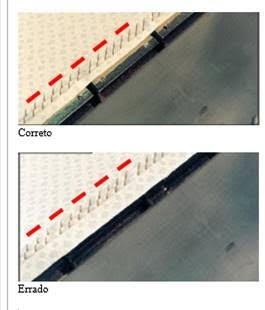Is your company aware of how much it could be losing due to item breakage on the production line? Many do not have internal failure analysis control and, in some cases, failures go unnoticed.
This negligence generates costs with waste and the production of second-quality parts, as well as delays and other problems related to deliveries. Therefore, in today’s article we bring some of the causes of production failures. Check out the article below to learn about them and devise strategies to avoid them!
Mass loss in the dyeing preparation processes
Before starting the dyeing or printing process, textile articles need to go through a process called preparation or pre-treatment, so that all impurities from the fabric are removed. At this stage, the fabrics are subjected to chemical or physical processes, depending on the type of final product you want to obtain. Examples: purging, pre-bleaching and bleaching.
The amount of loss varies depending on the composition of the substrate that will be inserted and also the colors in which they will be dyed. In the case of light colors, the loss is greater due to the preparation being more aggressive, and in darker colors, the loss is less because in many cases just purging is enough in the preparation.
Losses in seams and splices
In the processing process, seams are made when assembling batches, joining the rolls to each other. In the processing process, seams are made when assembling batches, joining the rolls to each other. When done poorly, they can increase breakdowns and losses, which is why they must be optimized as much as possible.
It is now possible to mitigate losses in this process, using technologies that automate and standardize seams. The Delta Double Tubular Mesh Preparer automatically sews tubular articles, generating standardization of seams piece by piece and batch by batch, drastically reducing raw material waste, and all this through optimizing activity with high productivity.
Problems when cutting halos on branches
Knitwear tends to wrinkle naturally, due to its manufacture on a circular loom. The branching process provides dimensional stability to the substrate and, consequently, eliminates drying.
The halo cutter is responsible for cutting the material that has left marks from the branch chain needles. This material, in addition to being marked by needle holes, does not stabilize and consequently shrinks, and must be cut.
The use of an efficient cutting system combined with correct maintenance of the branch are essential for reducing waste and waste in this process.

The red dotted line will be the cutting point of the halo, by the cutter installed at the branch exit. Everything beyond the dotted line becomes mesh residue, waste and, consequently, adds to the breakdown of material. At this point, there is a way to reduce waste using the Edge Trimmer with intelligent optical sensor and automatic adjustment.
Related:
- Waste in processing: how to avoid it?
- How to increase textile productivity?
- 3 machines to speed up and maintain quality in textile finishing
Losses in finishing
Another point where losses/breakages may occur are considered to be physical, tertiary finishes, such as fuzzing, furling, razoring, among others. The percentage of breakage will vary depending on the structure, composition and finish of each material.
It is important that each development of a new mesh is followed by monitoring and analysis of losses, which consists of collecting all waste generated at each stage of the process, weighing it and establishing tolerable breakage percentages.
One way to control breakdowns in this process is to implement an efficient processing system, controlling the processes to avoid unnecessary waste.
Loss of natural moisture (regain)
When fabrics are exposed to room temperature, they can absorb or lose moisture to the environment, damaging the quality of the roll and making the internal percentage of moisture in the roll different from the external part that was exposed to the weather.
This moisture can be recovered using the Hydro Spray Station which, in an automated way, balances the moisture content of the fabric as a whole. Find out more about this equipment in our article about it.
With the use of a hydrosprayer, it is possible to apply different finishes such as waterproofing, flame retardant treatments, softeners, among others. It also helps improve touch, fit and reduces breakage in the process.
Now that you know some important points that can cause item breakage and production losses, also get to know these 3 machines to speed up and maintain quality in textile finishing!


![E-book]How to ensure quality control in the textile industry?](https://deltamaquinastexteis.com.br/wp-content/uploads/2019/04/ebook-como-garantir-o-controle-de-qualidade-na-industria-textil.jpg)
